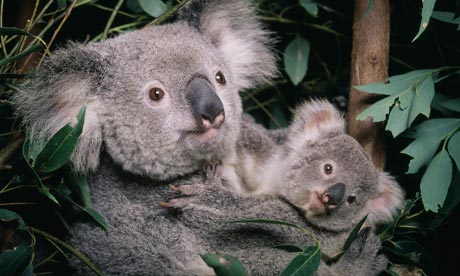Australia's beloved koalas under threat
Pressures on the marsupial include urban sprawl, farming, drought, heatwaves and disease an article by Marie-Morgane Le Moël

There is no shortage of postcards featuring lovable koalas in Australia, but it is much more unusual to catch sight of the marsupials in the wild. The situation could deteriorate further, say scientists. The number of koalas – a symbol of Australia – is falling. A senate committee is due to report on whether they should be treated as an endangered species.
Several factors are to blame, above all the loss of habitat due to urban development and farming. The koala needs large areas of eucalyptus forest for food and shelter. Only certain tree species suit its needs, growing on good-quality soil. "Unfortunately the best places for the koala are also best for humans, namely fertile land," Melzer explains. When their habitat shrinks and they are forced to live close to towns, koalas often get knocked over by cars or attacked by dogs.
Koalas also suffer from heatwaves and drought, which are likely to become more frequent with climate change. They do not like high temperatures and need the moisture of dense foliage.
Koalas are also suffering from an endemic strain of the sexually transmitted disease chlamydia. "This comes on top of the other pressures already affecting the population," says Mathew Crowther, a biologist at Sydney University.
Although scientists agree on the risks, koalas are still not recognised as an endangered species by the federal government. Individual states have their own classifications. In New South Wales, for instance, koalas are listed as "rare and vulnerable", whereas in Queensland their status depends on the location.
Koala campaigners say a national classification is essential, particularly if it enables the koala's habitat to be protected from property development.
This story originally appeared in Le Monde. and can also be found on the Guardian's Website.
No comments:
Post a Comment